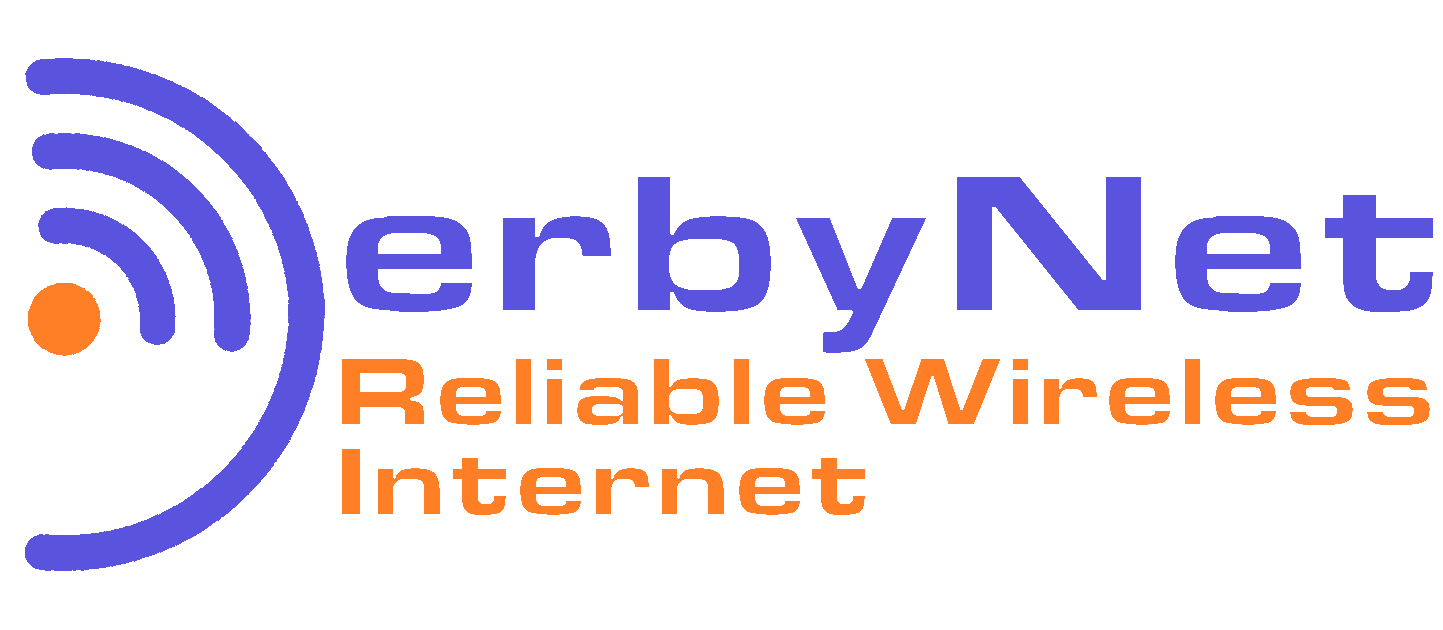Connecting your wireless Windows 10 device to your network:
- Find the wireless icon located in the lower right-hand corner of your computer screen. It should look like wireless waves emanating our from a point (much like the "D" in our DerbyNet logo!)
- left-click on this icon. It should pull open a menu of available wireless networks.
- Select the appropriate network and follow the on-screen instructions. If you are unsure about your wireless name/WPA2 password, contact our technical support team. NOTE: We will only collect this information if you have one of our routers, but we will be happy to help out if not.
- You should now be connected to your internet.
Checking active bandwidth usage on a Windows 10 device:
- Right-click on an empty area on your toolbar (the toolbar is the horizontal bar at the bottom of your screen that contains the start button, application icons, and the current time.) This will open a sub-menu.
- In the sub-menu, locate and left-click the Task Manager option. Alternatively, press and hold CTRL + ALT + DEL and locate the Task Manager Icon.
- Once you are in your Task Manager, left-click the "More Details" option. If you see "Fewer Details," you can skip this step.
- At the top of the Task Manager window, select the Performance tab.
- Depending on whether you are hard-wired into your router or wireless, locate the appropriate graph on the left-hand side of the window (Ethernet for hardwired, or Wifi for wireless,) and left-click the small graph to see a larger breakdown of that connection on the right-hand side.
- On the right-hand side of the window you will now see that connection with lots of information. To see what you are downloading on that connection, location the Receive number. This will tell you how much data you are downloading. Likewise, the Sending number indicates how much data you are uploading.
How to configure your Netflix's bandwidth usage:
Taken from: https://help.netflix.com/en/node/87
Note: It may take up to 8 hours for these changes to take effect.
- Sign in to Netflix.com.
- Select the profile you'd like to change your data usage settings for.
- Select Account.
- Under My Profile, select Playback Settings.
Select your desired data usage setting (please note that each estimate below is per stream, and that restricting data usage may affect video quality):
Low (0.3 GB per hour)
Medium (SD: 0.7 GB per hour)
High (Best video quality, up to 3 GB per hour for HD and 7 GB per hour for Ultra HD)
Auto (Adjusts automatically to deliver the highest possible quality, based on your current internet connection speed)
Select Save.
How to configure your Hulu's bandwidth usage:
Taken from:
http://armstrongonewire.com/Support/Internet/Articles/HuluQualitySetting
- On your desktop computer or Android device, select the "Settings Gear Icon."
Note: iOS devices auto-detect speed and cannot be changed - The option to adjust quality settings will pop up (Low, Medium, High, Auto).
- Select your desired option.
How to throttle Steam's bandwidth usage:
- Open your Steam app.
- Click Steam in the upper left-hand corner, then select Settings.
- Select Downloads.
- Choose the Limit Bandwidth to dropdown menu, and select the number according to your bandwidth demands. If you are on our Professional Surfing package, for example, you might select 1.0mbps here.
- Select OK at the bottom.
- Your Steam library will now only download at the selected bandwidth speed.
How to turn off Energy-Saving Mode on Xbox One:
Note: Energy-saving mode allows your Xbox One to continue running updates while it is technically powered off. Turning this setting off will prevent it from taking your bandwidth.
Taken from: https://support.xbox.com/en-US/xbox-one/console/learn-about-power-modes
- Press the Xbox button to open the guide.
- Select Settings > All settings.
- Select Power & startup > Power mode & startup.
Select Power mode to change the setting.





